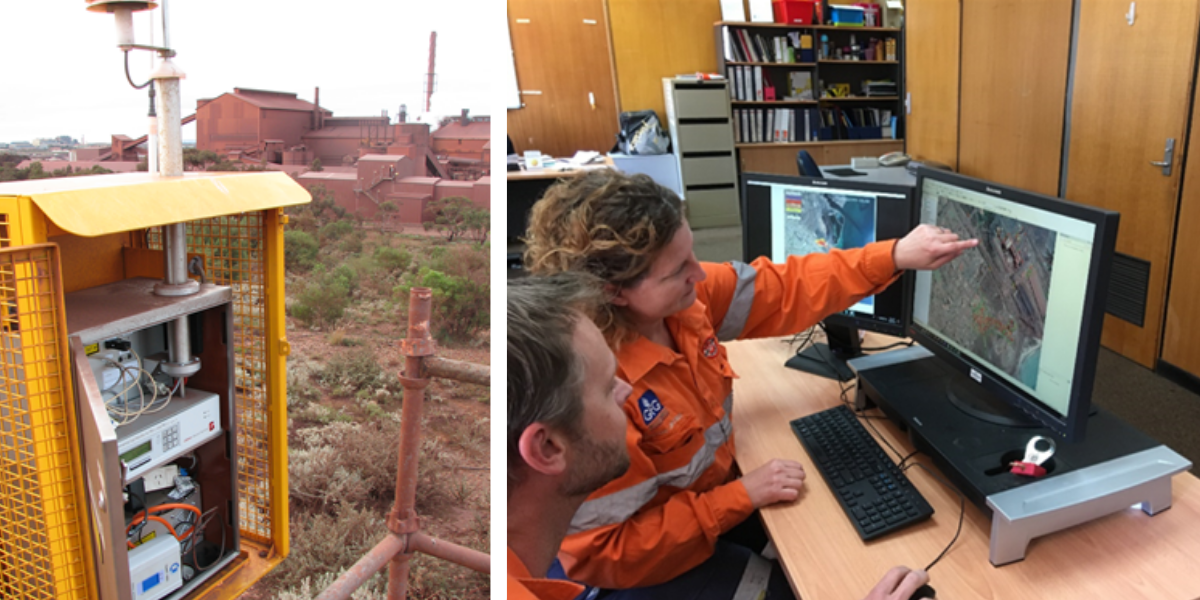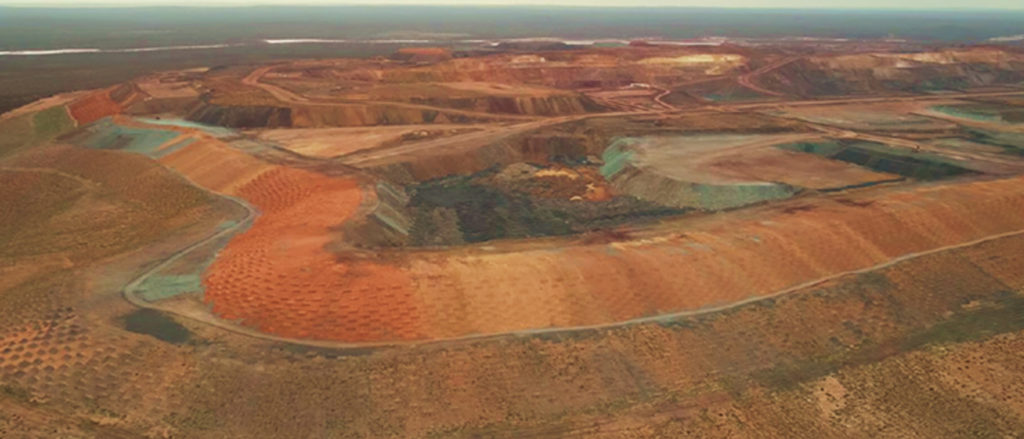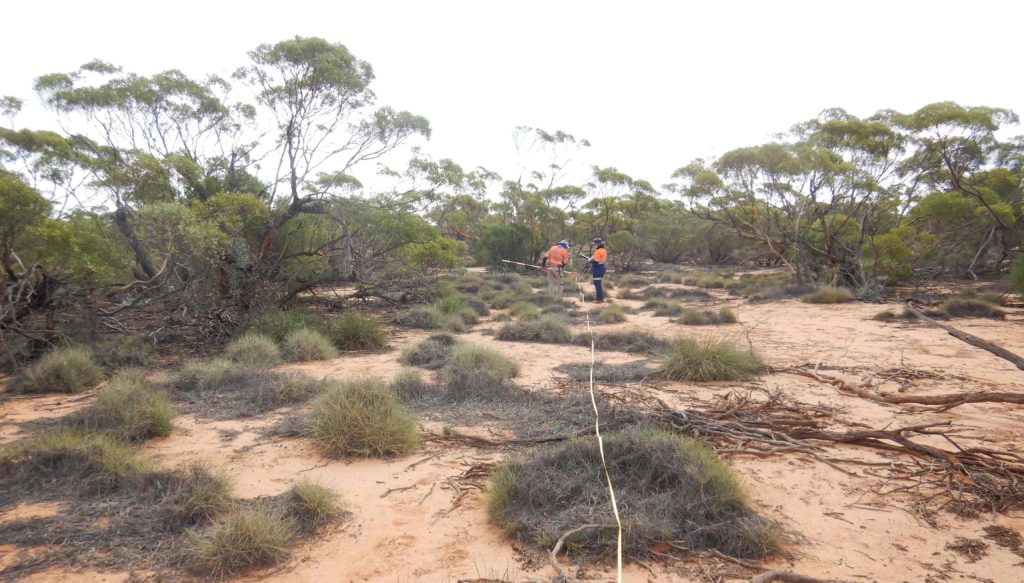Overview
GFG seeks to improve business sustainability by valuing environmental, social and economic considerations in our decision making.
Our sites operate under consents issued by the South Australian Government and regulated by the Environment Protection Authority and/or Department for Energy and Mining.
We work hard to minimise our impact, consistent with a continuous improvement philosophy, but we know that at times our performance will need to be improved. To this end we adopt a scientific and risk-based approach to environmental management, by understanding and minimising the effect of our operations on the environment. We seek continual improvement of environmental performance to address this, the efficient use of resources, and the minimisation or prevention of pollution.
Our Vision is to have a positive impact on our community, economy and environment by openly engaging our employees and stakeholders and delivering on our commitments. We welcome feedback and questions and appreciate and value the opportunity to engage directly with our communities.
Our operations are certified to the ISO14001 quality standard for Environmental Management and are audited annually by an independent third-party.
If you see something that’s of concern, we’d love to hear from you – email usEnvironment Policy
We are committed to pursuing a high standard of environmental management throughout our operations and strive for continual improvement of environmental performance, the efficient use of resources, and the minimisation or prevention of pollution.
View our environment policyAir quality
The Whyalla Steelworks is a large industrial facility which operates close to the community of Whyalla. As part of the operation, it is necessary to move large amounts of bulk materials into, around and out of the facility. This means that dust is a key environmental focus for the site. In mining areas dust is also a key focus, to minimise the amount of dust that could leave the operational areas and onto surrounding vegetation or property.

History
Historically, the Whyalla Steelworks had a material impact on the community of Whyalla through the effect of “red dust”, or red staining hematite, primarily from the Pelletising Plant, which makes pellets of iron ore, suitable for the Blast Furnace, and is located directly adjacent to the east end of Whyalla. In 2008, supported and encouraged by the community, “red dust” was significantly addressed through “Project Magnet” being the conversion of the Pelletising Plant to magnetite feed and to a wet process.
Ongoing focus
Due to the proximity of this large site to the community, dust remains a key priority for GFG. Significant effort is expended to continually improve by carefully measuring and assessing dust types and sources to prioritise controls and improvements.
A number of operational controls are used in Whyalla and in mining areas in the Middleback Ranges such as the use of both chemical dust suppression and water application to roads and stockpiles, fixed water sprays on transfer points on conveyors and discharge points and on ore fines in rail wagons, keeping some bulk storages of materials in enclosed sheds, the use of dust collecting equipment in processing plant and sheds, minimising speed limits on unsealed roads, the use of street sweeping equipment, and an operator- empowered dust ranking and action system.
Continuous improvement
Some recent areas of focus have been:
- closure of additional stockpile areas and increased water cart capacity
- upgrades to more roadways and integration of dust suppression polymer
- infrastructure repairs and additional water sprays
- a major upgrade to the Pelletising cooler system and process controls that resulted in improved process stability.
- repair of the inner harbour tip pocket to return more rail to the inner harbour and away from the outer harbour nearer the community
- use of improved binding chemicals on selected bulk storages.
The Whyalla Steelworks also has a number of stacks designed to lift emissions when they occur away from ground level and into the atmosphere to allow safe dispersion. GFG seeks to minimise these emissions and has strategic investment programs to achieve this.
Land management and cultural heritage

GFG holds approximately 300 mining tenements and has a duty to manage its custodianship of land responsibly and with care. One of the ways we seek to achieve this in the Middleback Ranges is through the Middleback Alliance, a long running partnership between landholders.
Middleback Alliance
The Middleback Alliance is a cooperative framework for sustainable land management across the southern Middleback Range and surrounding areas. The Alliance is directed by three major landholders in the region (Ecological Horizons, Landscaping SA Eyre Peninsula and SIMEC Mining). Other landholders also participate by sharing resources and cooperatively delivering a works program across land boundaries. The Middleback Alliance delivers improved and sustainable land management outcomes. To date, 12 properties have participated over an area of more than 250,000 hectares.
GFG undertakes regular flora and fauna surveys and assessments around its operations and reports on these against baseline and control sites.

Significant Environment Benefit (SEB)
SIMEC Mining has offset the impact of the vegetation clearance associated with its operations in the Middleback Range Mines and over the last 15 years this has been achieved by the establishment of the Ironstone Hill Conservation Park to the west of the Middleback Ranges.
Cultural Heritage
Protection of Aboriginal heritage is an important aspect of land stewardship which GFG takes very seriously. GFG has established protocols in place with the Traditional Owners of the land on which we operate, and before development occurs heritage surveys are conducted and documented. If work needs to take place near identified sites of significance, then in addition to internal controls and procedures, experienced monitors – appropriately authorised by Traditional Owners – are asked to be present during such works as an additional safeguard.
Resource use
GFG seeks to use energy, fresh water and other resources efficiently, including an emphasis on scrap metal recovery and recycling. Fresh water is regarded as a precious resource. Seawater used preferentially and reuse of fresh water is sought as far as practical. A number of waste streams of process water are reused in the process to reduce demand on the River Murray. Power use is minimised to the extent possible with waste process gases used for power generation and as a fuel source.
Lifecycle Perspective
GFG Australia has adopted a life cycle perspective with respect to its operations and has numerous initiatives, processes and controls to minimise the impact, and maximise the sustainability, of its processes across the life cycle.
To support this perspective GFG Australia has developed EPDs (environmental product declarations) for construction products, which represents about 80% of steel products produced. Detailed information on how these EPDs were produced can be found in the Methodology Report. These EPDs provide detailed information about the relative environmental impact of different products at different stages of the life cycle.
Download the Liberty Primary Steel Hot Rolled Structural and Rail Products EPD